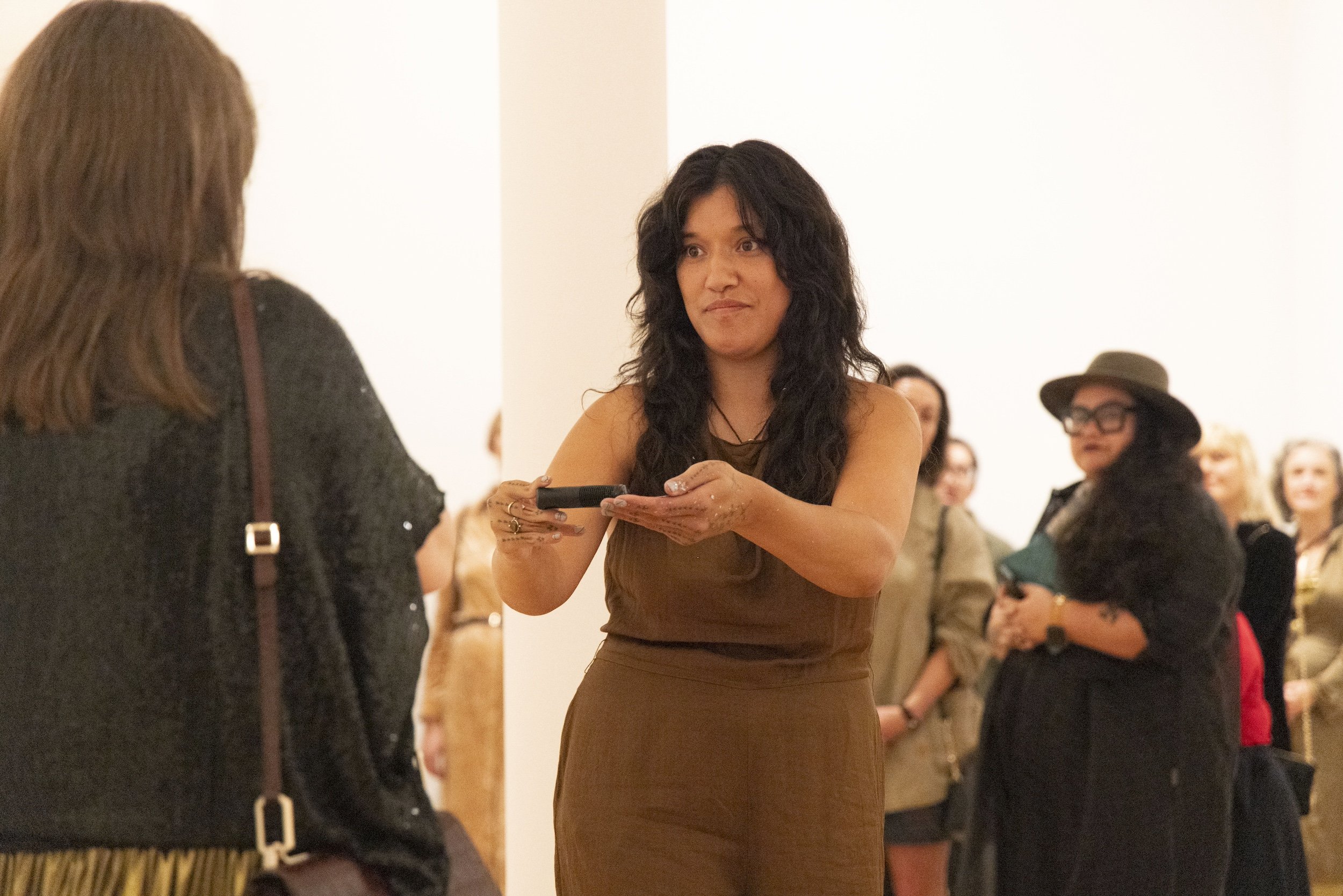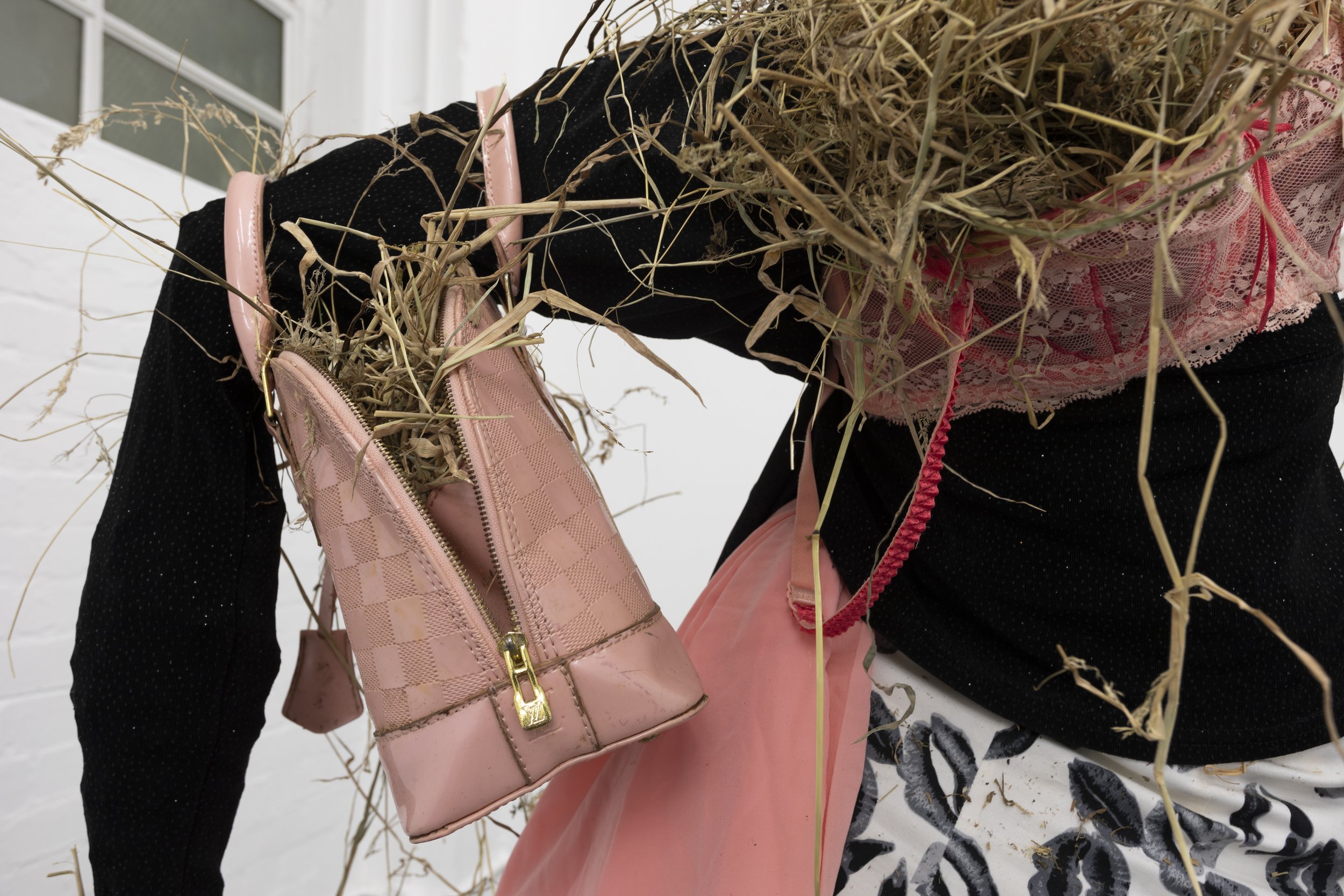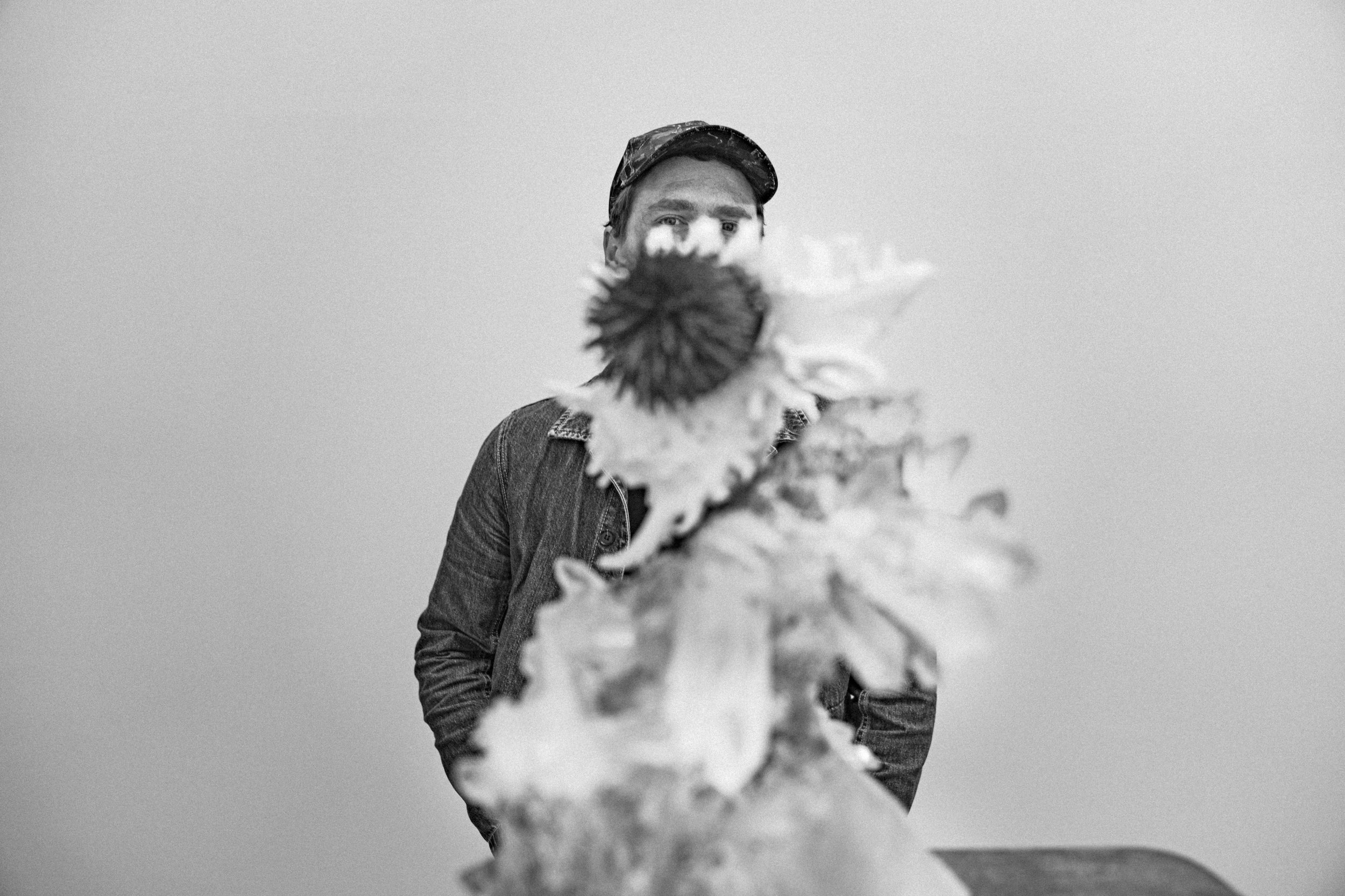Artist Q+A with Hōhua Thompson
We speak to Hōhua Thompson about his upcoming exhibition Tuku / Transfer at Trish Clark Gallery, 18 October – 16 November 2024.
Working at scale, Thompson’s practice reflects on intergenerational knowledge transmission, storytelling and kaitiakitanga. He combines traditional Māori art forms such a whakairo and tukutuku with modern materials and processes to communicate stories from his own whakapapa, and to examine how these stories may apply to wider Māori communities. Tuku / Transfer includes newly created works alongside two significant projects, Te Haehaenga O Pekehāua and Te Kete Rokiroki.
Te Haehaenga O Pekehāua, recently exhibited in Memory Lines at City Gallery Wellington, occupies and imposes on physical space with an evocative presence. A mōteatea chant is heard above, a means to reinforce Ngāti Rangiwewehi knowledge within the space. This mōteatea is a recording of Hōhua, his mother and father and cousin Casey, referencing the way in which mōteatea were often played on a marae as a way of handling down long stories associated with tribal boundaries and ancestral whakapapa.
Te Kete Rokiroki, previously seen in different iterations at The Dowse Art Museum and The Blue Oyster Art Project Space, references Te Arawa traditions that speak of the kūmara being brought to Aotearoa by Whakaotirangi where it became increasingly important to Māori, as other crops from Te Moananui-a-kiwa proved difficult to grow. Kūmara are associated with the atua Rongomātāne, who is not only the atua of cultivated plants, but also of peace. “This association gave the kūmara a chiefly reverence by our tupuna. So transforming the gallery space into a māra kūmara (kūmara garden), grown from tupu or ‘slips’ which are sprouts grown from kūmara from the previous harvest, and collectively tending them, is to take care of and share the stories and mana of not only my koro, but of all our tupuna. Te Kete Rokiroki becomes a venue for sharing and discussion through the collaborative maintenance of the māra kūmara, which provides us with fertile ground and stable footing with which to grow our own narratives to take forward.”
Kia ora Hōhua. Ko wai koe?
Kia ora, ki to taha o tōku pāpā he uri no ngā waka ō Te Arawa me Tereanini. Ki te taha o tōku māmā, ko Mātaatua me Māmaru ōku waka. On my father’s side, I am a descendant of the waka Te Arawa and Tereanini, and on my mother’s side Mātaatua and Māmaru are my waka. I’m an artist and have a day job working with youth in Rotorua. I’m Hingatu and Marlene’s son, and Tiana’s brother. Ko Hōhua Thompson ahau.
Hōhua Thompson, Te Haehaenga O Pekehāua, 2024. Installation view, Memory Lines (curated by Dr Kirsty Baker), City Gallery Wellington Te Whare Toi. Photo: Cheska Brown
Te Haehaenga O Pekehāua is an imposing installation. At first I thought the twenty-two standing forms were gestures to the structure of a wharenui, but the longer I looked the more stuck became the image of the upturned whale ribcage half-buried in the sand. I later read your account of Pekehāua’ death. Could you retell it for our readers?
Pekehāua was a Taniwha who travelled to Aotearoa from Hawaiki alongside Ruaeo, an important Ngāti Rangiwewehi tupuna. He settled in a cave deep in the spring that our awa flows from, Te Waro Uri.
From his home in the spring, Pekehāua patrolled the tribal lands of Ngāti Rangiwewehi for hundreds of years. He took his role as Kaitiaki very seriously. To this day, no has ever drowned in our awa, and we say this is because our kaitiaki looks out for us. However, He would also hunt and eat any trespassers on our land, or anyone he felt was there to harm us. This led to him gaining a reputation as being a menace, a monster.
So, a war party was formed, led by a chief named Pitaka. He and his men used supplejack vines, made stronger by the use of karakia, to weave a great trap. Once completed, Pitaka swam deep into Te Waro Uri. His men above chanting karakia to soothe the Taniwha so that Pitaka could slip the trap around the huge body of Pekehāua.
They caught him, dragged him up and slew him. When they cut open his body, they found human remains, clothes, weapons and other treasures. To them, it was confirmation that he needed to be killed. To Ngāti Rangiwewehi, it was confirmation that he was the protector of our people and lands.
The story says a lot about the relationship of Ngāti Rangiwewehi to their territory, but also about the way stories change depending on who tells them. The work also features a sound element in which you, your parents and your cousin sing a mōteatea. Why did you want to include their voices in the work?
The work aims to centre Ngāti Rangiwewehi knowledge and I think that including Ngāti Rangiwewehi voices was a good way to add to that. My cousin Cassey has always been a great source of inspiration and knowledge when it comes to our Rangiwewehitanga, especially with waiata and haka. My father is my connection to the iwi, he’s taken us out there to the marae and the awa my whole life. Mum isn’t from Rangiwewehi but it was special to include her in my work, and I’m certain Pekehāua wouldn’t have a problem with it.
Hōhua Thompson, Te Kete Rokiroki, 2020. Installation view, From The Ground Up, The Dowse Art Museum, 2021. Photo: Ted Whittaker
Hōhua Thompson, Te Kete Rokiroki (detail), 2020. Installation view, From The Ground Up, The Dowse Art Museum, 2021. Photo: Ted Whittaker
Te Kete Rokiroki, which you are presenting in Auckland for the first time at Trish Clark Gallery, foregrounds the connection between gardening and storytelling. You show the mara as a forum, where the communal work of planting and harvest doubles as an important space for tending relationships and histories, as much as the plant or land. Can you tell us a bit about your own relationship to gardening and how you started to think about bringing it into the gallery space?
To be honest, I’ve never been a great gardener. But my Koro Pa was. He passed away while I was at art school, and lots of my practice since then has been an attempt at teaching myself the things that I wish I had learned from him. He taught me and my cousins heaps, how to prepare a hangi, how to set a hinaki, how to bait a fish hook, but he was very skilled at a lot of things, so there was always more to learn.
The thinking behind bringing these ideas into the gallery space started when my parents moved home to their very own little slice of paradise at Rotoiti. They quickly built up gardens and planted fruit trees, which they tended meticulously. Over the last few years I’ve watched them tend their gardens and use it as a way to spend time with my nieces and nephews. My sister’s sons in particular love when they get to harvest sugar snap peas or dig the kumara out of the ground.
Something I find interesting about the work is that it looks quite sci-fi—like a cryogenics lab or some form of spaceship-agriculture preserving these tubers for the future (maybe aboard Robert Sullivan’s Star Waka!). You talk about the bringing of kūmara to Aotearoa by Whakaotirangi as being important to the work, but there seems to be a speculative aspect to the work also that asks us to consider kaitiakitanga, continuity and inheritance. How have its various iterations shaped your thinking about these ideas?
The concept of tuku iho, or passing down through whakapapa is an important part of all of my works. So as the story of te kete rokiroki a Whakaotirangi is important, so too is what happened to the kumara and, by extension, Māori people since those events.
For me, these works have all been about whakapapa. Each iteration has been like a new generation, adding to the whakaaro or ideas behind it. I wanted to do something different, and highlight different aspects of the original idea with each new presentation of the work.
Whenever you talk about valuing whakapapa, kaitiakitanga has to be a part of that. There have been times when I think that we, as a people, have had our ability to provide kaitiakitanga over our taonga diminished. I remember reading an article by Rawinia Higgins where she said “it takes one generation to lose a language and three generations to restore it”. We know that many of our grandparents or great grandparents either didn’t speak the reo, or they didn’t hand it on for whatever reason, and now, regardless of many of my cousins not growing up being fluent speakers, we are learning, and many of my nieces and nephews attend kura kaupapa and will grow up as native speakers. This is the idea that was most important to me in the latest iteration of this work. Even though we have been separated, disconnected from each other and sometimes our whenua, we are still Māori, and we can still thrive.












